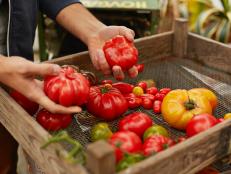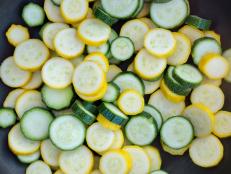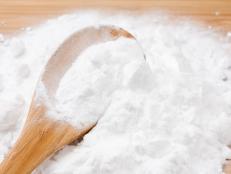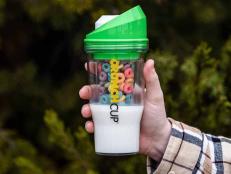How to Freeze Fresh Berries
How to be sure those berries will be ready for pies, smoothies and more.

Creativ Studio Heinemann / Getty Images
By Katherine Lok for Food Network Kitchen
Whether you over-purchased, you're planning to make smoothies or you want to preserve some peak-season fresh-picked fruit, there are plenty of reasons to freeze berries before they spoil. While there are proper ways to store berries in the fridge to ensure optimal freshness, freezing berries is an even better way to extend their usefulness and ensure you'll have fresh fruit on hand whenever you fancy it.
The main enemy of all berries is moisture. Resist the temptation to wash your berries as soon as you bring them home if you don't plan to immediately eat them. In general, you can simply transfer berries to the freezer in their unwashed state — making sure to label them as unwashed, so that you wash them before use — but if you prefer to wash them beforehand, lay them out on a paper towel to make sure they are completely dry before freezing. Then, when you're ready to use them, give them a rinse beforehand. Blueberries have a natural protective wax coating, so it's best to freeze them as-is and rinse before using. Strawberries can be washed with the stems on. Once you wash them, remove the stems, slice in half and dry well before freezing.
Spread out the dry berries in a single layer on a baking sheet and freeze until solid (at least 3 hours) before transferring to an air-tight freezer bag. This ensures that the berries won't stick to each other when it's time to take them out. Resealable and reusable freezer bags are a great space-saving option as they can be stacked side-by-side or in flat layers. Make sure to mark the date you froze the berries on the bag to keep track of when you froze them, and whether or not they need to be washed before use.
It's best to freeze berries that look plump and are at peak ripeness, but that doesn't mean you should toss the wrinkly ones! Pick out the berries that look lackluster and cook them down into a simple sauce to be used in a yogurt parfait or drizzled over pancakes or waffles.
Use frozen berries within 6 months of freezing. Add the frozen berries to smoothies, oatmeal and baked goods. The texture of thawed berries won't be the same as when they were fresh, so it's best to cook them or toss them into smoothies. To minimize risk of bacteria if using freezer berries in uncooked preparations, you can boil the berries on the stove for 1 minute, cool and freeze again to ensure they're safe to eat.
Recipes to Try:
Related Links:





























































